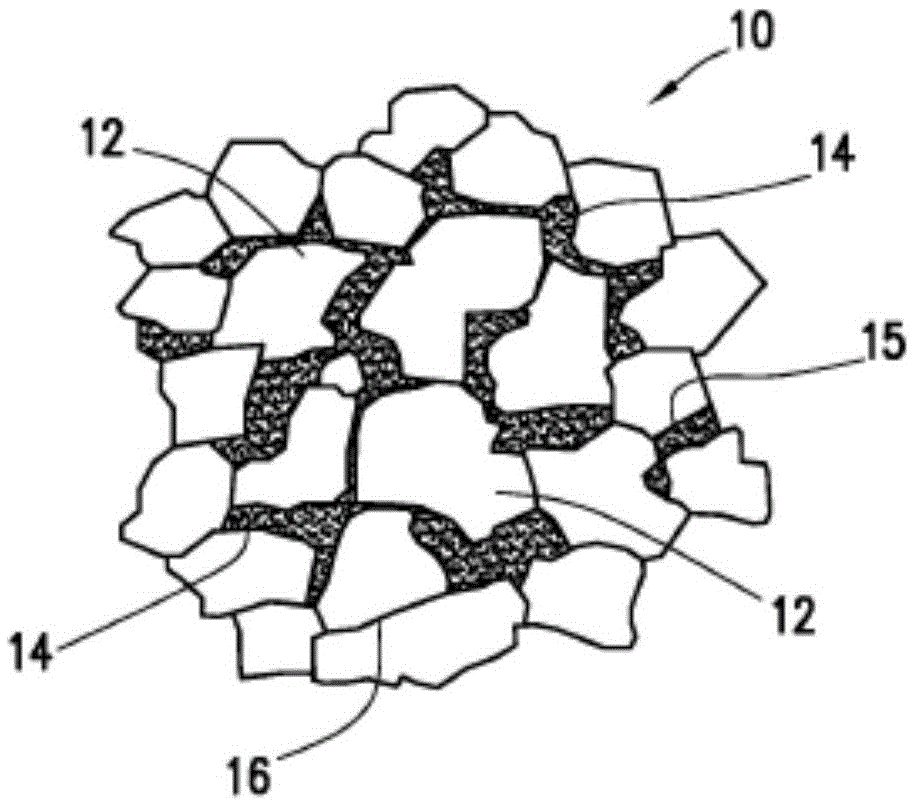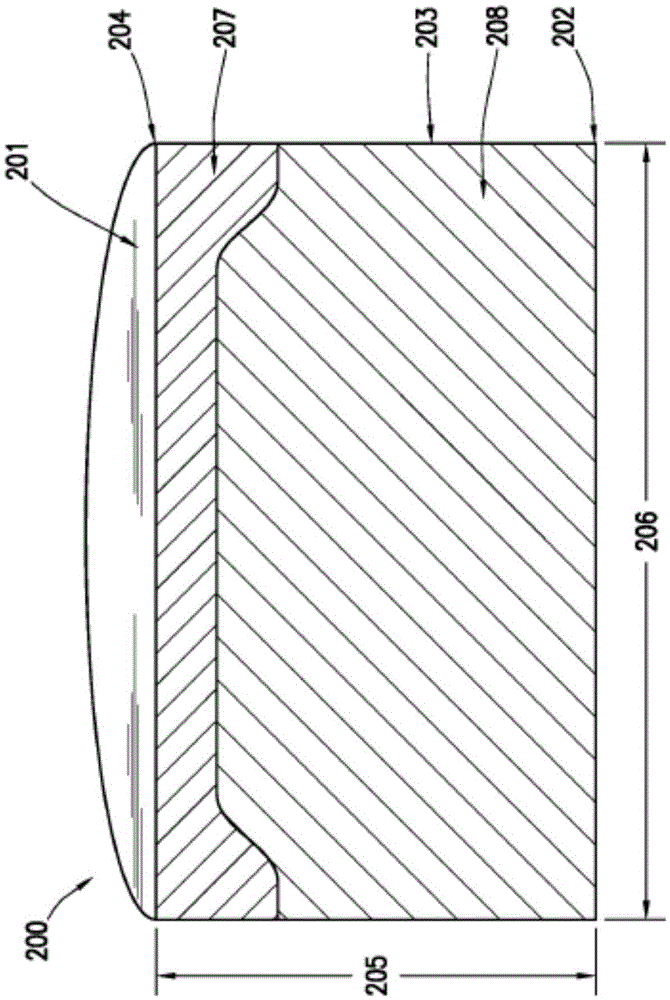Thermally stable polycrystalline diamond and methods of making the same
A polycrystalline diamond, diamond technology, applied in the direction of manufacturing tools, metal processing, earth-moving drilling and mining, etc., can solve problems such as failure of PCD cutting elements
- Summary
- Abstract
- Description
- Claims
- Application Information
AI Technical Summary
Problems solved by technology
Method used
Image
Examples
Embodiment Construction
[0017] As used herein, the term "carbonate-based polycrystalline diamond" refers to a process obtained by exposing individual diamond grains in the presence of carbonate material to conditions of high pressure and high temperature (HPHT) sufficient so that adjacent Intergranular bonding occurs between the diamond crystals to form a diamond-to-diamond bond and a network or matrix phase of interstitial regions dispersed between the bonded diamond grains resulting in the final material. The carbonate-based polycrystalline diamond of the present invention may be referred to as polycrystalline diamond or PCD, but is distinct from conventionally formed polycrystalline diamond formed by transition metal solvent catalysts (described in the background section). Additionally, one or more embodiments relate to oxide-based polycrystalline diamond formed by decomposing a carbonate-based polycrystalline diamond body.
[0018] The carbonate-based polycrystalline diamond body may have a micro...
PUM
 Login to View More
Login to View More Abstract
Description
Claims
Application Information
 Login to View More
Login to View More - R&D
- Intellectual Property
- Life Sciences
- Materials
- Tech Scout
- Unparalleled Data Quality
- Higher Quality Content
- 60% Fewer Hallucinations
Browse by: Latest US Patents, China's latest patents, Technical Efficacy Thesaurus, Application Domain, Technology Topic, Popular Technical Reports.
© 2025 PatSnap. All rights reserved.Legal|Privacy policy|Modern Slavery Act Transparency Statement|Sitemap|About US| Contact US: help@patsnap.com



